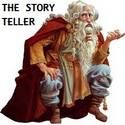When samples of rubber first arrived in England, it was observed by Joseph Priestley, in 1770, that a piece of this material was extremely good for obliterating pencil marks on paper, hence the name rubber was coined.
In the territory now know as Malaysia one of the chief exports was latex, produced from what is now commonly called rubber trees. The automobile couldn't be produced without rubber. Think of how much of the cars were made of rubber, hoses, belts, wipers, tires and tubes and much more.
During the WW2 part of the strategy of the Japanese was to cut off the supply of rubber from the pacific, hence crippling the American war effort. Our scientists overcame this problem by developing a synthetic rubber.
While it had many qualities of real rubber, it did not have the elasticity that was needed to make bullets for our rubber guns.
We (us kids of the Avenue) were constantly fighting our own wars.
Some of us would be the bad guys and some were the good guys. It really didn't matter which side you were on, the war was the important thing.
There was some attempt to manufacture rubber guns using regular rubber bands but we required heavier caliber bullets so we made our own guns and bullets.
The gun had a barrel ¾ inch square and 16-20 inches long. The handle was attached to the barrel and was about 3 by 4 inches in size. We would attach a spring type clothes pin to hold the rubber bands and a slight pressure on the pin would release the projectile.
Our rubber bands were made from old rubber tire tubes. We would cut across the tube making bands about ¾ inches wide.
Some of the kids were very inventive; they developed rifles that would shoot more than one bullet at a time. Everybody would carry at least two guns because it took time to reload, just like the western movies, we were two gun men.
We had an unlimited supply of raw material until the Japanese cut off the rubber supply from Indonesia. The new synthetic rubber wouldn't stretch like the real thing. We soon found our supply of ammunition running out and the rubber bands wars were over.
It was a sad day when we had to give up on the rubber guns due to no ammunition. This is when we realized how serious the war was. It was never the same after this happened.
We turned to other forms of entertainment, and made other things like stilts to walk on. We found out how to limp around when we had an equipment failure.
Another invention was to take two tin cans to stand on and punch two holes to insert a piece of rope in it. The rope had to be long enough to hold on to so as to keep the cans tight against your shoes, then you walk on them, until you fell, and got to limp some more.
While we constructed many of our toys one last thing I'll mention was our roller skate coasters. We would get a wooden vegetable box (veggies were shipped in wooden boxes due to the fact they needed moisture.) We would take a two by four about 3 feet long to which we would attach a roller skate which was in two pieces one piece on each end. We rode them like a scooter.
People would get out of your way, because they made so much noise and would sound dangerous. Three or four boys terrorizing on them could be a force to be reckoned with.
Thus came the end to this phase of our life but I'll never forget the rubber gun wars.
Subscribe to:
Post Comments (Atom)














No comments:
Post a Comment
If you are having trouble making a comment - select anonymous but please add your first name to the comment.